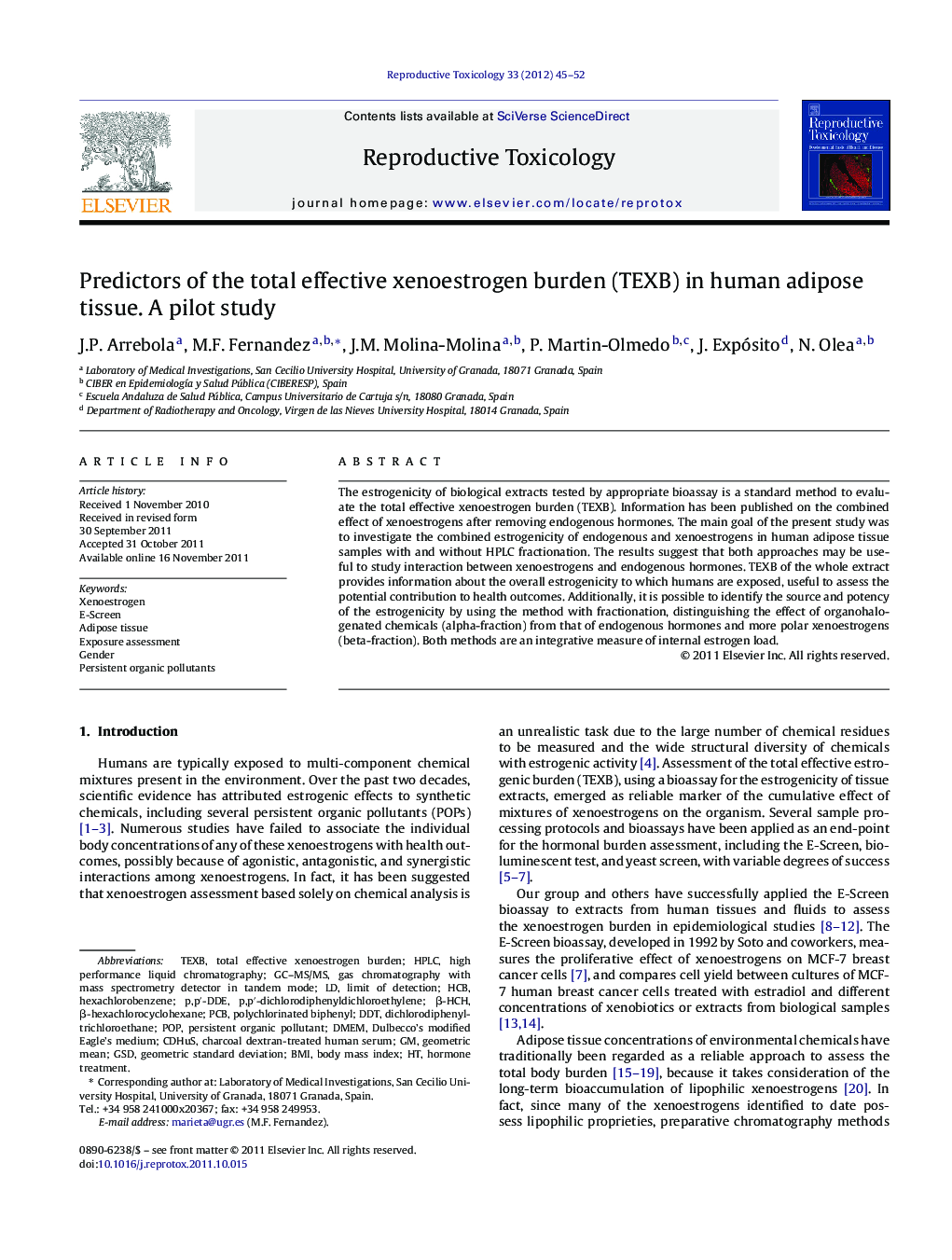| Article ID | Journal | Published Year | Pages | File Type |
|---|---|---|---|---|
| 2594370 | Reproductive Toxicology | 2012 | 8 Pages |
The estrogenicity of biological extracts tested by appropriate bioassay is a standard method to evaluate the total effective xenoestrogen burden (TEXB). Information has been published on the combined effect of xenoestrogens after removing endogenous hormones. The main goal of the present study was to investigate the combined estrogenicity of endogenous and xenoestrogens in human adipose tissue samples with and without HPLC fractionation. The results suggest that both approaches may be useful to study interaction between xenoestrogens and endogenous hormones. TEXB of the whole extract provides information about the overall estrogenicity to which humans are exposed, useful to assess the potential contribution to health outcomes. Additionally, it is possible to identify the source and potency of the estrogenicity by using the method with fractionation, distinguishing the effect of organohalogenated chemicals (alpha-fraction) from that of endogenous hormones and more polar xenoestrogens (beta-fraction). Both methods are an integrative measure of internal estrogen load.
► The total effective xenobiotic burden (TEXB) was investigated in human samples. ► Adipose samples were processed with endogenous estrogens and after their removal. ► Both procedures represent an integrative measure of the internal estrogen load. ► TEXB of the whole extract represents the total activity to which humans are exposed. ► Extract fractionation may help to determine source chemicals and potency of mixtures.
